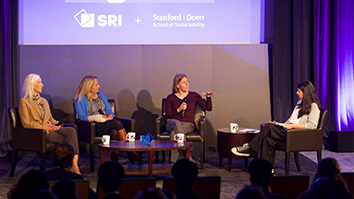Citation
Shechtman, N. & Knudsen, J. (2009). Bringing out the Playful Side of Mathematics: Using Methods from Improvisational Theater in Professional Development for Urban Middle School Math Teachers. Vol. 11. Play and Culture Series, November 21, 2009.
Introduction
With such a strong emphasis on testing and accountability in this No Child Left Behind era, and in a nation where more than 60% of the citizens are estimated to be affected by math anxiety (Ashcraft, Krause, & Hopko, 2007), mathematics is not something many people associate with play. In fact, in urban middle school math classrooms, mathematics is typically anything but playful. Such schools are likely to have constrained, procedural-skill-focused mathematics programs in urgent attempts to make quick gains on high-stakes tests (Meier & Wood, 2004; Mintrop, 2004). Many urban districts are underfunded, are low performing by current measures, and serve a high number of students who have special challenges of language, poverty, and cultural differences.
Teachers’ interactions with students are typically of a traditional pattern called “teacher initiation, student response, and teacher evaluation” (IRE) (Cazden, 2001; Mehan, 1979). In an IRE interaction, the teacher is the sole authority figure, evaluating the correctness of students’ answers and giving feedback when students make mistakes. In classrooms dominated by IRE, the stakes can feel high, correctness can take strong precedence over figuring out concepts, and students are rarely provided an opportunity to generate their own ideas creatively. These students tend to develop a view of their role as passive receivers rather than active constructors and show little confidence in discussing mathematical ideas (Boaler & Greeno, 2000; Chazan, 2000; Lubienski, 2000). In essence, the traditional discursive patterns of the mathematical classroom can foster rigidity in thinking, a lack of conceptual understanding, and low confidence in mathematical skills.


